NRAO eNews
Volume Vol#, Issue Iss#
Day# Month# Year#
NRAO eNews
Volume Vol#, Issue Iss# • Day# Month# Year#

Upcoming Events

ALMA Cycle 10 Proposal Preparation Workshops
April 14 - 27, 2023 | Various Locations

New Eyes on the Universe: SKA & ngVLA Conference
May 1 - 5, 2023 | Vancouver, Canada

2023 Gordon Research Conference on Origins of Solar Systems: Chemical and Dynamical Constraints on Planet Formation
Jun 11 - 16, 2023 | Mount Holyoke College, MA

19th Synthesis Imaging Workshop
Jun 13 - 21, 2023 | Charlottesville, VA

New Era of AGN Science with Vera C. Rubin LSST
Jul 24 - 26, 2023 | Charlottesville, VA

The Evolution of Gas in and around Galaxies
Jul 31 - Aug 4, 2023 | Stanley, ID

GBO Single Dish Summer School
Aug 6 - 11, 2023 | Green Bank, WV and Online

ALMA at 10 years: Past, Present, and Future
Dec 4 - 8, 2023 | Puerto Varas, Chile
ALMA Cycle 10 Call for Proposals
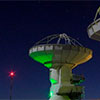
The ALMA Director, on behalf of the Joint ALMA Observatory and the partner organizations in East Asia, Europe, and North America, is pleased to announce that the ALMA Cycle 10 Call for Proposals for scientific observations is now OPEN! ALMA Cycle 10 is currently scheduled for observations from October 2023 to September 2024. Users of any nationality or affiliation are invited to submit proposals before the deadline of 15:00 UT on Wednesday 10 May 2023.
In the main 12-m Array, antenna configurations C-1 to C-8 (with max baselines between 0.16 and 8.5 km) will be offered. The hours available for approved science observations will be announced in the CfP. Projects with observations in the highest-frequency Bands 8, 9, and 10 are strongly encouraged. Proposers are encouraged to submit ACA stand-alone observations for targets that can be observed in the LST range of 20h to 10h.
| 12 Apr | Release of the ALMA Cycle 10 CfP and Observing Tool, and opening of the archive for proposal submission |
| 10 May | Proposal submission deadline |
| Aug | Results of the proposal review sent to proposers |
| 1 Oct | Anticipated start of Cycle 10 observations |
Additional information available on the ALMA Science Website.
Showcasing Radio Astronomy at AAS242 in Albuquerque, New Mexico, 4-8 June, 2023
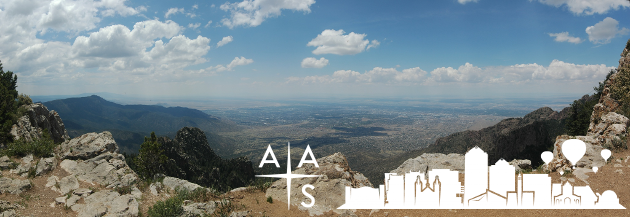
The following sessions and opportunities at the summer June 2023 American Astronomical Society (AAS 242) meeting in Albuquerque will showcase the scientific range and impact of radio astronomy facilities in New Mexico. The exact dates and times of all these events will be available soon.
Town Hall An evening NRAO Town Hall will inform AAS attendees about the status of science, science operations, and exciting development programs at the National Radio Astronomy Observatory (NRAO).
Special Tour A special behind-the-scenes tour of the Karl G. Jansky Very Large Array (VLA) will occur on Sunday, 4 June. Tour sign-up is due *May 4* with a cost of $126.
Special Session The University of New Mexico is organizing "Radio Astronomy in New Mexico" to highlight radio astronomy performed with facilities based in New Mexico.
Splinter Session "An Explorer's Guide to the VLA Sky Survey (VLASS)" will showcase the survey, science highlights, and data products. Users will be guided through data access and tools with focus on using new single-epoch continuum images and cubes for polarimetry.
Splinter Session ngVLA community leaders are organizing "The Next-Generation VLA: Update and Community Forum," a working meeting that will describe and discuss ngVLA science and the development of a transition from the VLA and VLBA to ngVLA.
AAS242 early registration ends *April 20*. See the meeting website for details.
Imaging the M87 Shadow and Jet with the ngVLA + ngEHT
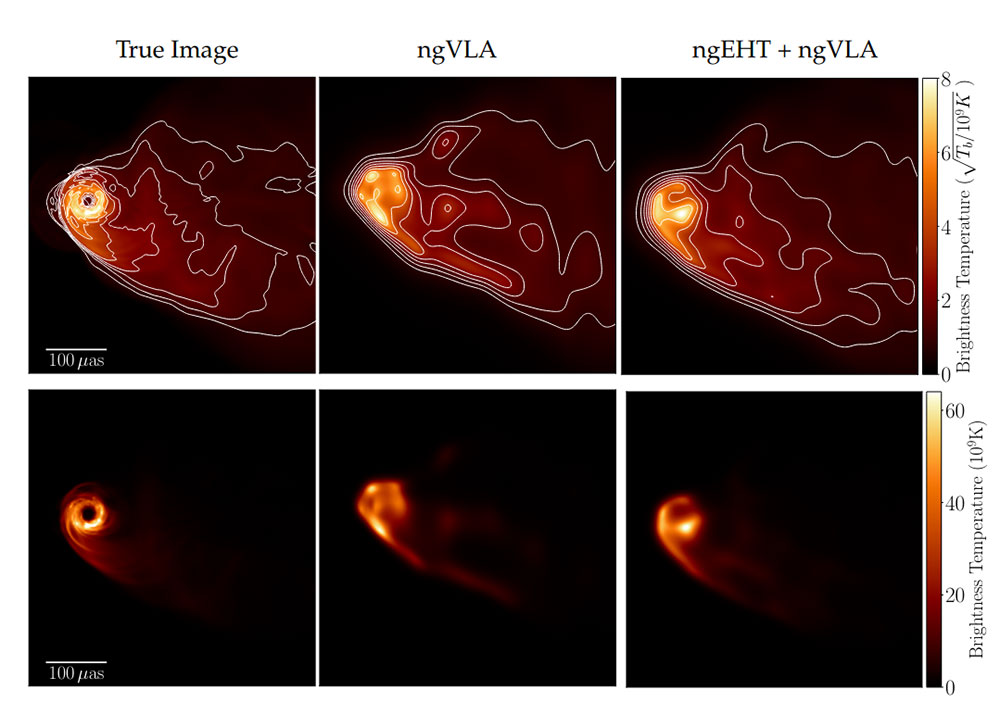
Synthetic image reconstructions of M87 based on simulated observations of the jet and shadow at 86 GHz. Square-root rendering emphasizes the jet (top row). Linear rendering emphasizes the shadow (bottom row). Credit: Issaoun et al. (2023).
[click to enlarge]
M87's black hole was famously imaged using the EHT (Event Horizon Telescope Collaboration et al. 2019), revealing a bright ring-like emission structure surrounding a dark central region. This ring is produced by strong gravitational lensing around a 6.5 billion solar mass black hole, which is also known to launch a powerful relativistic jet extending for many parsecs (e.g., Walker et al. 2018). This jet is expected to originate very close to the black hole itself, but low-frequency Very Long Baseline Interferometry observations have had insufficient angular resolution to image the jet base. While the EHT images have excellent angular resolution, they are severely limited in dynamic range and identify the ring, but not the low-surface-brightness jet base.
The next-generation EHT (ngEHT) is an ongoing project to expand the EHT by adding dedicated new dishes, increased bandwidth, and multiple observing frequencies (Doeleman et al. 2019). These enhancements will enable horizon-scale imaging of both the M87 and Sgr A* black holes at high dynamic range, revealing the jet base in M87 and opening up dynamical studies of both sources through reconstruction of time-resolved movies.
A recent ngEHT workshop explored and endorsed the inclusion of an 86 GHz capability, enabling interoperability with current and upcoming facilities such as the ngVLA. Though the ngEHT dishes will be located at high-altitude international sites that provide long baselines, they will also have small (<10 m) diameters, so the sensitivities of baselines between ngEHT dishes will be comparatively modest. Substantial increases in both sensitivity and u-v coverage at 86 GHz could be achieved by jointly observing with the ngEHT and ngVLA.
In our simulated image reconstructions of M87 (Issaoun et al. 2023; see figure), the ngVLA provides higher dynamic ranges that enable detection of the jet. Adding the ngEHT improves the resolution and enables imaging of the central brightness depression related to the black hole shadow. The appearance of this depression probes the inner shadow rather than the photon ring, providing opportunities for measuring the accretion flow and black hole properties (Chael et al. 2021). The simulations also inform the potential for dynamical studies. In general, our simulations point towards exciting high-profile science that can be achieved through synergy between these two next-generation instruments.
Since 2015 the acronym ngVLA has appeared in 950+ publications indexed in the SAO/NASA Astrophysics Data System. This article continues a regular feature intended to showcase some of those publications. We are especially interested in showcasing work done by early-career researchers. The collection of showcase articles can be viewed online. Anyone wishing to volunteer to author a feature should contact Joan Wrobel.
Volunteers Needed to Serve on VLA, GBT & VLBA Science Review Panels

Members of NRAO’s Science Review Panels (SRP) play a very important role in identifying the Science Programs for these world-leading radio telescopes.
Being a reviewer could help you to:
- Learn what science other astronomers are interested in;
- Get a sense of what makes the most compelling proposals;
- Build your group of professional contacts and potential collaborators;
- Understand the review process for a major observatory.
If you are interested, please apply via this online form to be a volunteer SRP member!
19th Synthesis Imaging Workshop, Charlottesville: Registration is OPEN!!
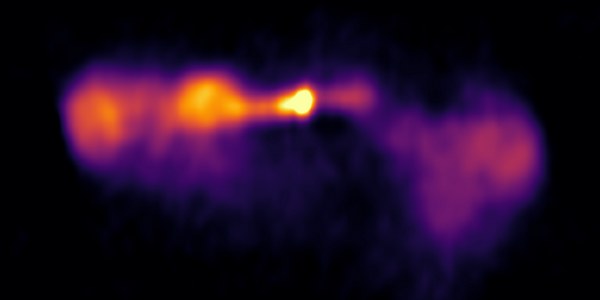
Image produced by the VLA Sky Survey (VLASS)
The 19th NRAO Synthesis Imaging Workshop will be held 13-21 June 2023 in Charlottesville, Virginia. The workshop will consist of lectures on aperture synthesis theory and techniques at a level appropriate for graduate students in astrophysics. The program also includes discussion groups, and tutorials demonstrating data collection, calibration, and imaging of various types of observations, including new data from the Very Large Array (VLA), Very Long Baseline Array (VLBA) and the Atacama Large Millimeter/submillimeter Array (ALMA).
On Saturday, 17 June, 2023 there will also be a guided tour of the Green Bank Observatory including the 100-m Green Bank Telescope (GBT).
Registration for the workshop is now OPEN!
Registration will close on Monday, 01 May 2023.
This workshop will be limited in capacity and it fills every year so please get your registration confirmed early. This is also an excellent opportunity to engage with domain experts in many scientific areas that have used radio facilities. Special presentations on multi-messenger and time domain projects will also be given.
Any questions, comments, or concerns, including possible financial support for the meeting and virtual options, please contact the meeting organizers.
New Era of AGN Science with the Vera C. Rubin LSST
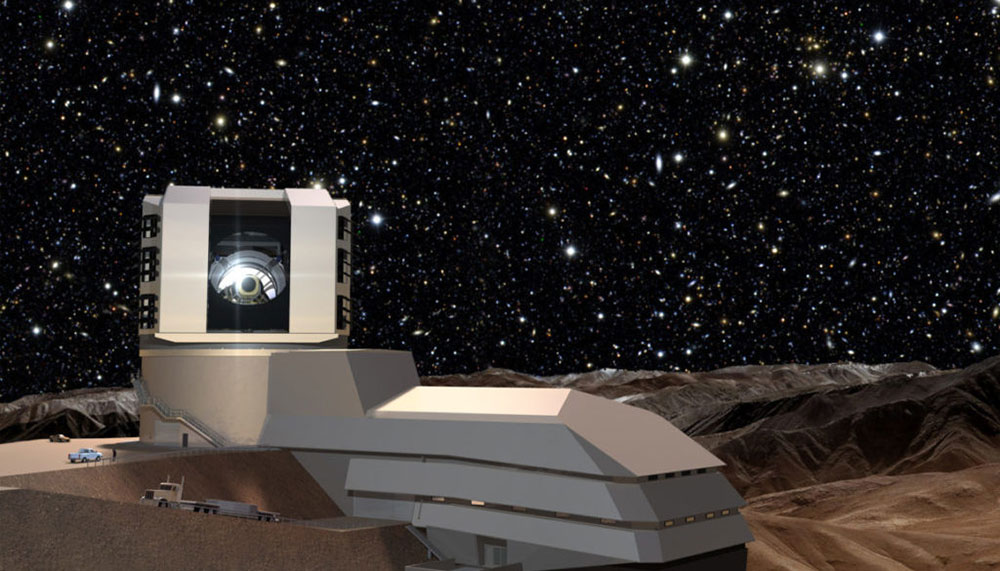
[click to enlarge]
The Legacy Survey of Space and Time (LSST), to be conducted by the Vera C. Rubin Observatory beginning in 2025, will enable studies of the growing supermassive black holes (SMBHs) in active galactic nuclei (AGNs) on a truly massive scale.
The North American ALMA Science Center (NAASC) will host a workshop for the LSST AGN Science Collaboration (AGN SC) on 24-26 July 2023 at the NRAO headquarters in Charlottesville, VA. This workshop will enable the LSST AGN SC to: (1) continue building up the effort of the AGN SC to prepare for the LSST operations in 2025; and (2) broaden the participants and interests from early career scientists by introducing the LSST AGN SC and having an interactive discussion on various aspects of AGN science in the LSST era.
The abstract submission deadline is 30 April and the registration deadline is 15 May.
Please see the meeting website for more information.
ALMA Program News
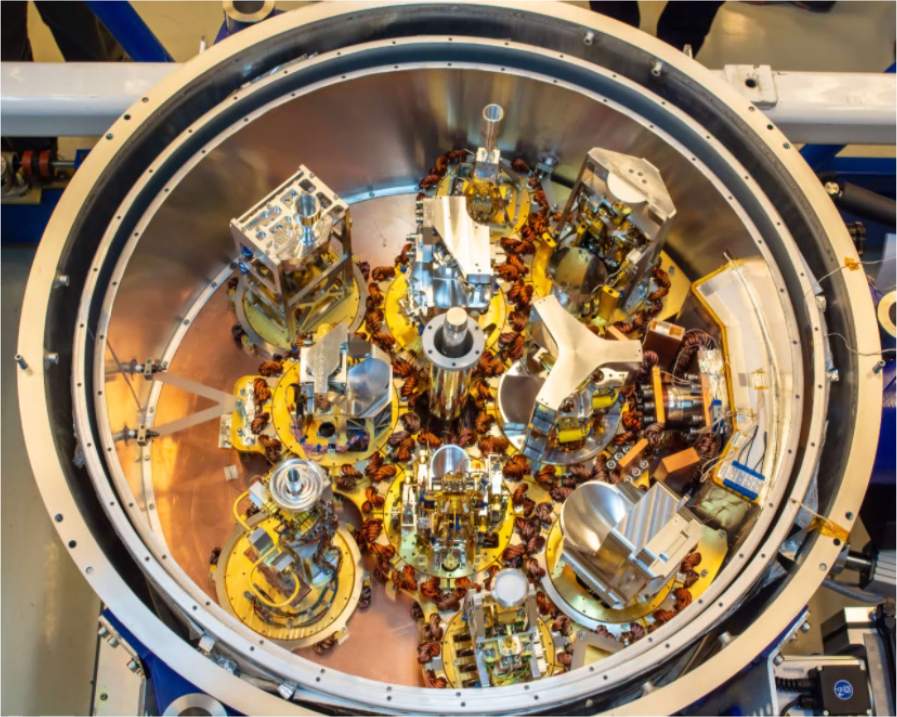
ALMA (ESO/NAOJ/NRAO)
A cryostat populated with all ten ALMA receiver bands. Band 1 (7mm) will be offered in Cycle 10. Band 2 is in final testing. ALMA will soon offer effectively continuous coverage of the millimeter spectrum (1cm to 0.9mm wavelength) from its spectacular high-altitude Andean site.
[click to enlarge]
ALMA Status
ALMA is observing in April in its C-5 configuration. As often occurs during this seasonal change, weather in late summer and early autumn on Chajnantor has somewhat limited observational success.
ALMA Wideband Sensitivity Upgrade Progress
Important progress was made on the ALMA Wideband Sensitivity Upgrade (WSU) this month. The 2nd Generation ALMA Correlator contract was signed recently. A successful Conceptual Design Review for the Digitizer was held this month in Bordeaux. Several NRAO North American ALMA Science Center (NAASC) staff participated. Additionally, an ALMA cryostat containing all ten ALMA frequency bands was tested in an antenna at Chajnantor.
New Targets for Science Verification: Band 1
New Science Verification targets that will demonstrate the Band 1 receivers are now listed on the Science Verification web page. The possible targets are:
- W51 observations of the SO2, SiO, and CH3OH lines as well as the continuum to demonstrate the imaging capability with ~2 arcsec angular resolution.
- Orion KL spectral scans between 35.1 and 49.55 GHz to demonstrate the new science capabilities for molecular line surveys and chemistry using Band 1, and to demonstrate the ability of obtaining and properly calibrating spectral scans across the band.
See Science Verification for more information. The data are planned to be taken with ~20 antennas and will be released for public use. The release of any Science Verification data will also be preceded by a similar announcement.
ALMA Cycle 10 Proposal Preparation Workshops
The ALMA Ambassadors are holding a series of Proposal Preparation Workshops in preparation for the Cycle 10 deadline (10 May 2023). The goal of these events is to provide users with the knowledge they need to carry out cutting-edge scientific research using the ALMA facilities. We are particularly interested in reaching new users, so no experience with radio astronomy is required to participate. Attend an event and learn about the latest ALMA capabilities, the basic of radio interferometry, and more. See the Community Events page.
2023 Jansky Lectureship – Call for Nominations
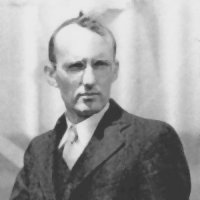
The Karl G. Jansky Lectureship is an honor established by the trustees of Associated Universities, Inc., to recognize outstanding contributions to the advancement of radio astronomy. First awarded in 1966, it is named in honor of the man who, in 1932, first detected radio waves from a cosmic source. In 2023 we celebrate the 90th anniversary of Jansky's discovery, announced in the paper he presented at the 27 April 1933 URSI meeting and with a front page headline in The New York Times on 3 May 1933.
The 2023 Jansky Lecturer will have made significant contributions related to radio astronomy, and will promote the appreciation of the science of radio astronomy through public lectures at the NRAO sites. A demonstrated ability to engage a wide audience will be a factor in determining the awardee. Visit the Jansky Lectureship website for a list of the previous recipients of this prestigious award.
Additional information, including the nomination and selection process, is available online.
Nominations for the 2023 award should be concise (~1 page) and address both the nominee’s contribution to the advancement of radio astronomy and their potential to increase public appreciation through the Jansky Lecture.
Nominations should be sent to jburns@nrao.edu by 28 April 2023.
NRAO scientific staff will be given an opportunity to vote on nominations received and the results will be included in the recommendation to the NRAO Director.
2022 Robert L. Brown Outstanding Doctoral Dissertation Award
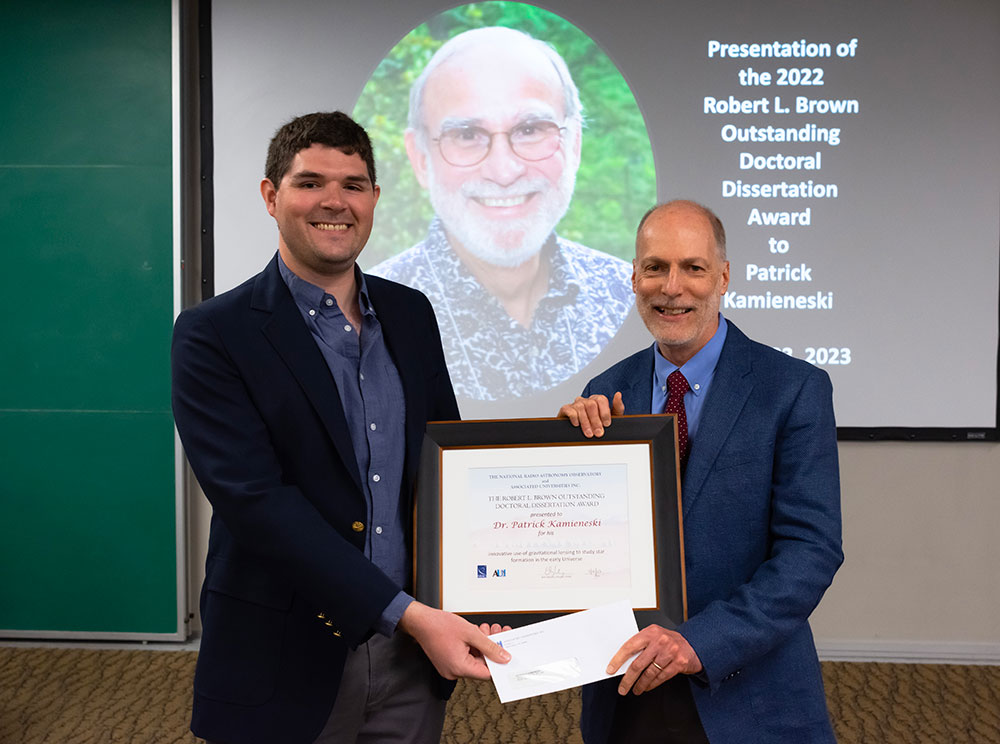
Patrick Kamieneski receives his Award from Deputy Director Phil Jewell
[click to enlarge]
NRAO and Associated Universities, Inc. are pleased to announce that Patrick Kamieneski, currently a postdoctoral scholar at Arizona State University, is the winner of the 2022 Robert L. Brown Outstanding Doctoral Dissertation Award. In his University of Massachusetts thesis, Dr. Kamieneski developed an innovative use of gravitational lensing to interpret his Atacama Large Millimeter/submillimeter Array and Jansky Very Large Array observations of high redshift galaxies to study the extreme rate of star formation in the distant Universe. He received his Award at a ceremony on 23 March 2023 at the NRAO Headquarters in Charlottesville, Virginia.
Bang Nhan Joins National Radio Dynamic Zone (NRDZ) Team
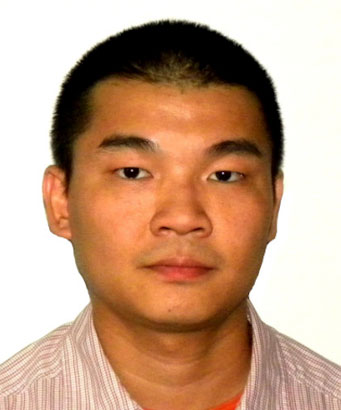
RFI scientist Bang Nhan
[click to enlarge]
The Spectrum Management Division is pleased to announce that Jansky Postdoctoral Fellow Bang Nhan will join the NRDZ Team as RFI Scientist this summer. Nhan, who received his Ph.D. in Astrophysics from the University of Colorado at Boulder (2018), has experience in radio astronomy instrumentation prototyping, simulation, and development, including designing and testing antenna feeds, and a software-defined radio (SDR) based spectrum measurement system.
During his Ph.D. work, Nhan led an effort to deploy and evaluate the first prototype of a global 21-cm experiment, Cosmic Twilight Polarimeter (CTP), as a proof of concept for a dynamic polarimetry technique. This work included the implementation of the CTP’s data acquisition, kurtosis-based RFI excision, polyphase filter bank spectrometer, reduction and analysis software pipeline. Recently, Nhan has worked in antenna prototyping and modeling with computational electromagnetic software packages for NRAO’s Advanced Spectrum Monitoring (ASM) system.
His work as RFI Scientist on the Spectrum Innovation Initiative (SII)-NRDZ project, funded by the National Science Foundation, will be focused on establishing a pilot program for real-time mutual awareness between satellite networks and radio telescopes.
A Farewell to our Editor
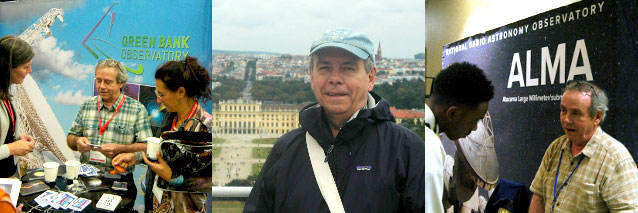
It is with profound thanks that we bid farewell to our long-standing eNews editor, Mark Adams. Mark has served in the Director's Office for 18+ years, most recently as the Science Communications Director. We wish him well in his forthcoming retirement on 21 April 2023.
In addition to his management of eNews and other NRAO deliverables, such as our Research Facilities Brochures and Annual Reports, Mark has been instrumental in creating NRAO’s flourishing presence at the American Astronomical Society meetings and other science community conferences. His eye for detail and jovial demeanor has been responsible for making our science communication efforts an outstanding success, reaching thousands of people the world over. Mark has also served as a mentor to many NRAO staff while sharing his enthusiasm for astronomy.
Brian Kent will be the new NRAO Director of Science Communications, and will serve as eNews editor starting with our next issue.
Recent Media Releases
|
2023 Jansky Fellows Awarded |
|
|
Baseline 15: Space Lasers! How Astronomers Use Astrophysical Masers |
|
|
Far, Far Away: Just How Distant Is That Galaxy? |
|
|
A Decade of Unveiling the Hidden Universe |
From the Archives
Ellen Bouton

[click to enlarge]
About this month's photo: Ten years ago, a highlight at the 13 March 2013 Atacama Large Millimeter/submillimeter Array (ALMA) inauguration ceremony was the video, recorded on board the International Space Station, in which U.S. astronaut Tom Marshburn and Canadian astronaut Chris Hadfield congratulated North America and its partners on the inauguration of ALMA.
From the Archives is an ongoing series illustrating NRAO and U.S. radio astronomy history via images selected from our collections of individuals' and institutional papers. If readers have images they believe would be of interest to the Archives, please contact Ellen Bouton.

